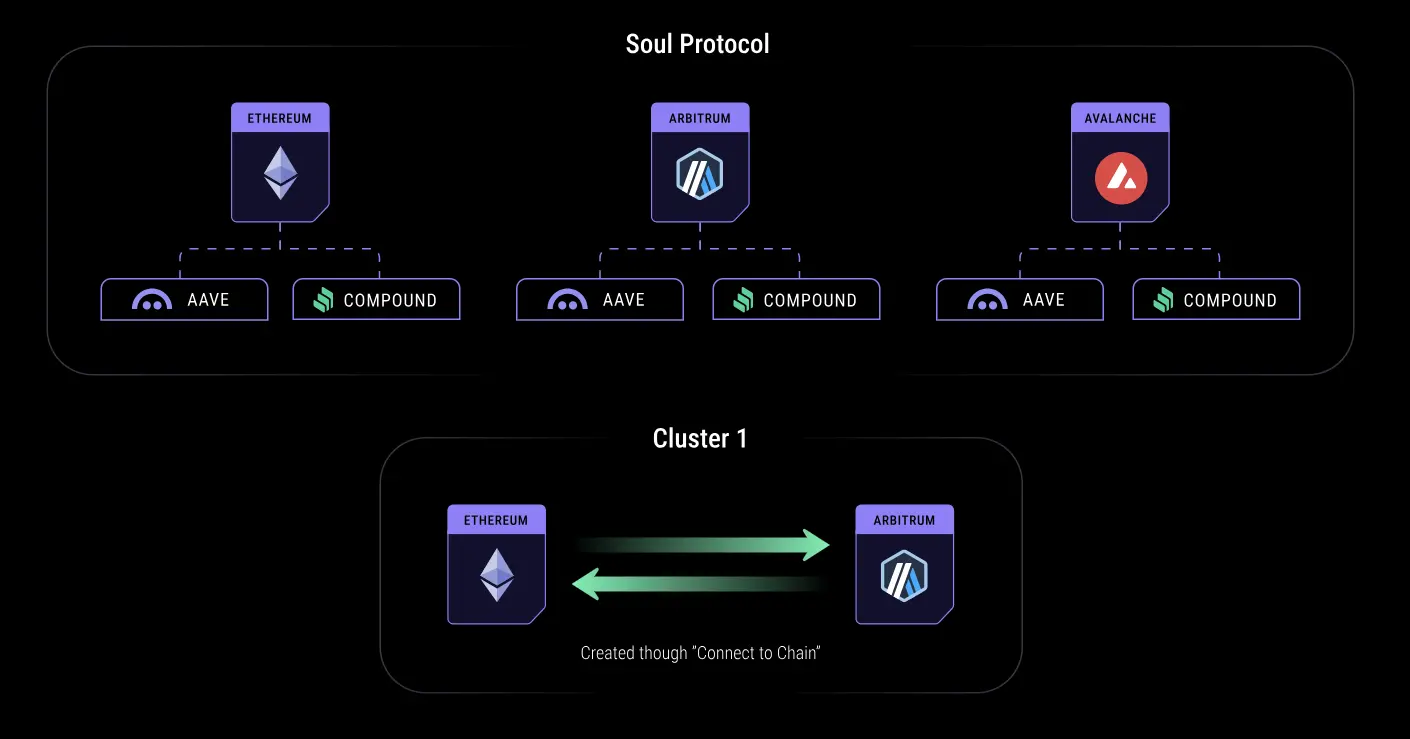Author: Scof, ChainCatcher
What is Soul Protocol?
Soul Protocol is a cross-chain lending protocol that aims to bridge the gap between existing DeFi lending protocols and different public chains, helping users to lend and borrow assets more flexibly between multiple chains and protocols. Users can use mainstream lending protocols such as Aave, Compound, Venus, etc. on multiple chains such as Ethereum, Arbitrum, Optimism, Avalanche, etc. to perform cross-chain lending operations.
The characteristic of Soul is that it does not rely on asset bridging or issuing synthetic assets, but allows users to directly use native assets for lending through cross-chain communication protocols such as LayerZero. This design reduces the risk and cost of users transferring assets between different chains, while improving the liquidity and efficiency of assets.

Currently, Soul is still in the testing phase and is open to users for functional testing, feedback and experience.
How does Soul break the lending barrier?
There are several common problems in the current DeFi lending market:
Lending agreements are fragmented
Most existing lending agreements only support a single public chain. If users want to borrow and lend between agreements on different chains, they often need to manually switch chains and bridge assets, which is a cumbersome process.
Cross-chain lending is costly and slow
Traditional cross-chain lending usually requires bridging assets, which not only adds additional steps, but also brings risks in terms of fees and asset security. The bridging process itself is not efficient enough to meet arbitrage or flexible lending needs.
Limited lending capacity
Since assets and lending capacity are scattered across different chains and protocols, users often cannot integrate all of their assets for lending, resulting in reduced capital utilization efficiency.
Soul Protocol attempts to solve the above problems through a unified cross-chain lending infrastructure:
Users can deposit assets on any supported chain and lend on other chains or protocols without bridging assets.
It can automatically match the interest rates on different protocols and chains to help users find lower lending rates or higher deposit returns.
During the lending process, users' assets and collateral capabilities are no longer limited to a single chain and protocol, thereby improving overall capital efficiency.
Supports cross-chain arbitrage, leverage and other strategies without cumbersome asset movement.
During the entire process, users only need to operate in the Soul interface, and the underlying cross-chain communication protocols such as LayerZero realize asset and data synchronization. In order to enhance the robustness of the system, Soul also accesses Wormhole, Axelar and Chainlink's CCIP as a backup channel to prevent communication interruptions.
Team Background and Current Progress
Soul Protocol was developed by Soul Labs. The team founder Ahmed S once developed Hatom. The project has maintained a low-key development over the past year. At this stage, the test network has been launched, supporting mainstream chains and lending protocols, and is open to external testing and feedback.
Soul Protocol operates in a community participation and testing incentive model. During the test network stage, users can earn points (Seeds) by using dApps and completing designated tasks. These points will be exchanged for Soul's native token $SO when the main network is released.
The project has not yet disclosed external financing information, but is promoting testing and product optimization through community participation. Users can help discover problems, make suggestions, and receive corresponding rewards by participating in testing.
 Anais
Anais




